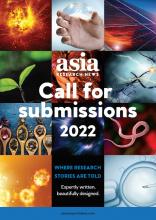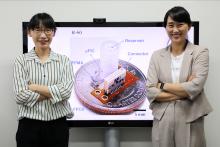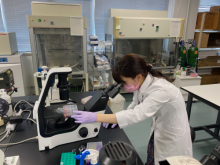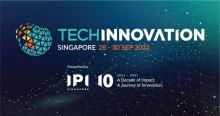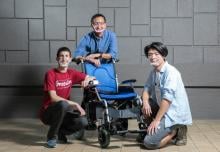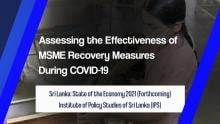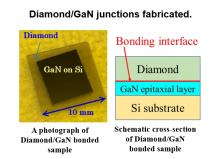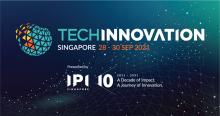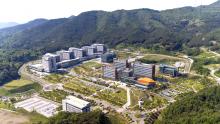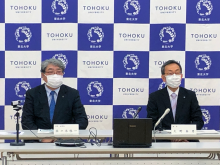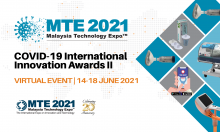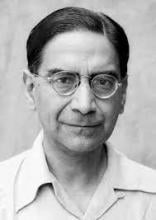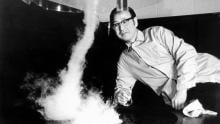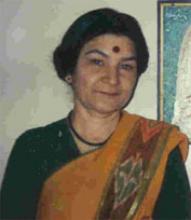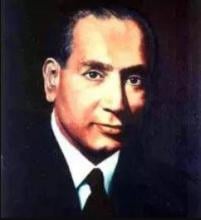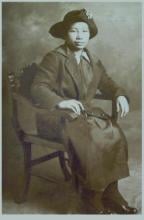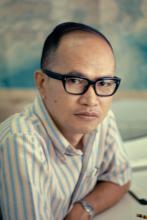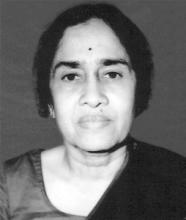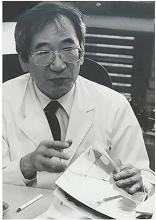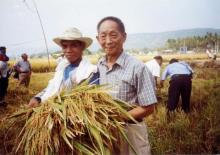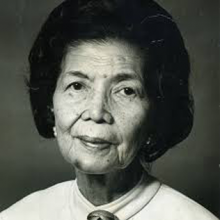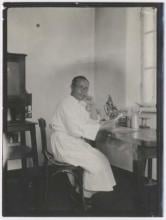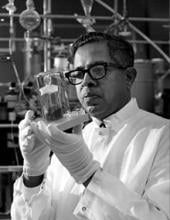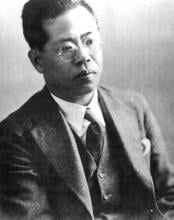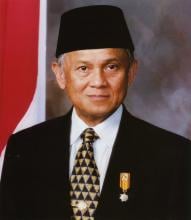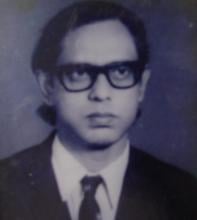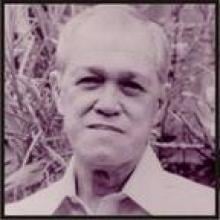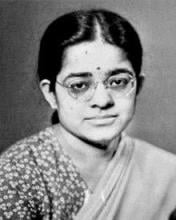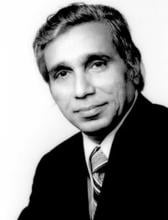Innovation
News
07 Oct 2021
Asia Research News features fascinating research from diverse voices. Our upcoming magazine will highlight your research with captivating articles written and visualized for a broad range of readers, produced by our professional team. Don't miss your chance to be a part of the 2022 edition.
05 Oct 2021
The conventional composer-performer-audience model requires students to spend a large amount of time learning complex musical notation and instrumental skills before enjoying the process of music-making. This makes music inaccessible for many, who therefore give up at an early age.
01 Oct 2021
Scientists propose an advanced network architecture that promises to overcome the drawbacks of traditional networks.
01 Oct 2021
Novel design of brain chip implant allows for measuring neuronal activity while simultaneously delivering drugs to the implant site
29 Sep 2021
The 10th edition of TechInnovation presents an array of opportunities to catalyse technology transfer and partnerships for business growth.
24 Sep 2021
Scientists created “elite” antibodies that can beat a broad range of coronavirus strains, including Delta, using a new technique that dramatically speeds up discovering potent antibody candidates.
24 Sep 2021
The Lingnan Entrepreneurship Initiative (LEI) of Lingnan University (LU) in Hong Kong has developed the CREW Wheelchair Control System which intelligently predicts a carer’s intentions so as to better control a wheelchair, improving the safety of both wheelchair users and carers. The research team recently won the Gold award at the international MUSE Design Awards, and has already filed patent applications in Hong Kong and Mainland for this ground-breaking system.
24 Sep 2021
As part of its aim to improve business and government agency efficiencies through the use of Information and Communications Technology (ICT), the Advanced Science and Technology Institute (DOST-ASTI), a research and development institute of the Department of Science and Technology, has signed a 3-year partnership with Bizooku Philippines on 27 August 2021.
23 Sep 2021
IPI’s flagship technology brokerage event will spotlight the latest global sustainability solutions from 28 to 30 September 2021.
14 Sep 2021
The Lingnan Entrepreneurship Initiative (LEI) of Lingnan University has received two Gold awards at the MUSE Design Award in the category Conceptual Design for their “CREW Wheelchair Control System” and “12° Mask” respectively.
13 Sep 2021
The MSME sector in Sri Lanka amounts to 1.017 million establishments, employing approximately 2.25 million persons. This approximates to more than 90% of total establishments in the country and 45% of total employment.
10 Sep 2021
Magnetic patterns in meteorites, Treating mitochondrial diseases, underwater sensors and a broad COVID-19 vaccine in the September Editor's Choice. Plus, what's it like to communicate vaccine research in a pandemic and Asia Research News 2022.
09 Sep 2021
Researchers succeed in the direct bonding of diamond and gallium nitride (GaN) at room temperature and demonstrate that the bond can withstand heat treatments of 1,000℃, making it ideal for the high temperature fabrication process of GaN-based devices. GaN-on-diamond semiconductor material will allow for the next generation of high power, high frequency devices.
27 Aug 2021
Speakers announced for the 10th edition of IPI’s premier technology matching event
17 Aug 2021
The Center for Digital Productivity Innovation Cluster, DGIST, commenced customized research based on in-demand technologies
08 Aug 2021
The Internet and Higher Education, co-edited by Professor Lim Cher Ping, Chair Professor of Learning Technologies and Innovation at The Education University of Hong Kong, who took over as Editor-in-Chief in 2015, was ranked first again in the e-learning category for the sixth consecutive year (2015 to 2020), according to the latest SCImago Journal Rank.
06 Aug 2021
Development of a deep learning technique that reduces the difference between image domains by separating and converting domain information of image capturing environments
06 Aug 2021
Researchers from the Daegu Gyeongbuk Institute of Science and Technology have developed a faster and more reliable way to print flexible digital devices.
27 Jul 2021
The university has unveiled a few more details of its new Green Goals Initiative, which includes developing green technology and promoting resilience and social Innovation. It also hopes to achieve carbon neutrality on campus by 2040.
27 Jul 2021
Adding lead and calcium to an industrial catalyst dramatically improves its ability to support propylene production at very high temperatures, making it stable and active for a month.
07 Jul 2021
For a timely respond to the government-level strategies on K-Semiconductor development, DGIST launched the Institute of Next-generation Semiconductor convergence Technology(INST).
05 Jul 2021
Scientists used digital circuitry to manipulate and store label-free matters in order to study their unique characteristics
30 Jun 2021
The 2-day virtual summit will highlight the disruptive trends affecting the mobility industry and how automakers can offer value while focusing on innovation-led growth. [日本語版有り]
24 Jun 2021
Participants competed in 17 categories covering the entire spectrum from prevention to tracking, individual to group technologies and ideas, business concept to humanitarian efforts.
21 Jun 2021
A tiny device incorporates a compound made from starch and baking soda to harvest energy from movement.
18 Jun 2021
A signalling protein thought to be able to treat liver damage in paracetamol toxicity could actually worsen it. Instead, Singapore scientists discovered, blocking its effects could be the way forward.
12 Jun 2021
Malaysia Technology Expo (MTE) 2021 – COVID-19 International Innovation Awards returns from 14-18 June 2021 with a virtual show, allowing immersive experience for visitors with live interactions.
11 Jun 2021
Hokkaido University researchers have developed a simple method that converts existing generic polymers into luminescent polymers using mechanical force.

04 Jun 2021
ARN's June newsletter features research on a hands-off approach to discipline, better robot hand design, nucleosomes and marine biodiversity, plus the latest Beyond the Journal and a feature from the ARN magazine.
31 May 2021
Inquiry-based science learning supported by information and communications technology tools has been a desirable innovative approach to instructional practices with effective teacher orchestration in school education. Teacher orchestration refers to how a teacher manages real-time, multi-layered activities in a context with multi-constraints for effective instructional practices, particularly with technology support. The issue of “How to help teachers to orchestrate students’ science inquiry within and beyond the classroom” remains a blank spot in the literature. The focus of this mobile learning app namely, m-Orchestrate (“m” stands for mobile) provides a practical solution to this question.
Events
Sorry, no events coming up for this topic.
Researchers
Sorry, no researchers coming up for this topic.
- « first
- ‹ previous
- 1
- 2
- 3
Giants in history
Physicist and statistician Prasanta Chandra Mahalanobis (29 June 1893– 28 June 1972), who founded the Indian Statistical Institute in 1931, is known for his pioneering application of statistics to practical problems.
Tetsuya Theodore Fujita (23 October 1920 – 19 November 1998) was a Japanese-American meteorologist who created the Fujita scale that classifies the strength of tornadoes based on damage to structures and vegetation.
In 1915, pathologist Katsusaburo Yamagiwa and his research assistant Koichi Ichikawa became the first to prove that chronic exposure to chemicals can cause cancer.
In 1915, Koichi Ichikawa along with pathologist Katsusaburo Yamagiwa became the first to prove that chronic exposure to chemicals can cause cancer.
A pioneer of bio-organic chemistry, Darshan Ranganathan (4 June 1941 – 4 June 2001) is remembered for developing a protocol for synthesising imidazole, a compound used to make antifungal drugs and antibiotics. Widely considered India’s most prolific researcher in chemistry, she also published dozens of papers in renowned journals on protein folding, molecular design, chemical simulation of key biological processes, and the synthesis of functional hybrid peptides and nanotubes.
In his over 30 year career in rice research, Munshi Siddique Ahmad (1924 – 19 October 2011) developed more than 30 varieties of high-yielding rice, including the BRRI Shail strain, which was responsible for increasing the rice production of Bangladesh from 8 million tonnes in 1965 to 20 million tonnes in 1975.
Hideki Yukawa (23 January 1907 – 8 September 1981) was awarded the Nobel Prize in Physics in 1949 for predicting the existence of the pi meson subatomic particle. Japan’s first Nobel laureate, Yakawa also expressed his support for nuclear disarmament by signing the Russell–Einstein Manifesto in 1955.
Ground-breaking cancer researcher Kamal Jayasing Ranadive (8 November 1917 – 11 April 2001) advanced the understanding of the causes of leukaemia, breast cancer and oesophageal cancer through the use of animal models. She was also among the first to recognise how susceptibility to cancer is linked to tumour-causing interactions between hormones and viruses.
Birbal Sahni (14 November 1891 – 10 April 1949), a pioneer of Indian palaeobotanical research, and founder of what is now the Birbal Sahni Institute of Palaeosciences in Lucknow, made multiple contributions to the study of prehistoric plants. These include the discovery of a new group of fossil gymnosperms (named Pentoxylae), reconstruction of the extinct Williamsonia sewardiana plant, and description of a new type of petrified wood from the Jurassic age.
The research of Filipino pharmaceutical chemist Luz Oliveros-Belardo (3 November 1906 – 12 December 1999) focussed on essential oils and other chemicals derived from native Philippine plants.
Japanese chemist Kenichi Fukui (4 October 1918 – 9 January 1998) was the first Asian scientist to be awarded the Nobel Prize in Chemistry. Together with Roald Hoffman, he received this honour in 1981 for his independent research into the mechanisms of chemical reactions.
Filipina chemist María Orosa (29 November 1892–13 February 1945) fought malnutrition and food insecurity in the Philippines by devising over 700 culinary creations including Soyalac, a nutrient rich drink made from soybeans, and Darak, rice cookies packed with Vitamin B1, which could prevent beriberi disease caused by Vitamin B1 deficiency. She was also a partisan of the guerrilla movement resisting Japanese occupation during World War II, and died after being struck by shrapnel while working in her laboratory during the Battle of Manila.
Research by Filipino plant scientist Benito Vergara (23 June 1934 – 24 October 2015) on the physiology of rice led to the development of deep-water and cold-tolerant rice varieties. Vergara also made several contributions to expanding public awareness of rice science.
Filipino chemist and pharmacist Manuel A. Zamora (29 March 1870 – 9 July 1929) is best remembered for his discovery of the tiki-tiki formula to combat beriberi, a disease caused by Vitamin B1 deficiency.
In 1939, biochemist Kamala Sohonie (18 June 1911 – 28 June 1998) became the first woman to be accepted into the Indian Institute of Science (IISc).
Korean parasitologist Seung-Yull Cho (16 November 1943 – 27 January 2019) is remembered largely for his pioneering works to control infections caused by helminthic parasites and his contribution to journal publishing.
Chinese agronomist Yuan Longping (7 September 1930 – 22 May 2021) developed the first varieties of the high-yield, hybrid rice that brought food security to multiple countries including China, which had been ravaged by food shortages as recently as the mid-20th century.
Fe Villanueva del Mundo (27 November 1911 – 6 August 2011) was a Filipina paediatrician who founded the Philippines’ first paediatric hospital.
After witnessing death and suffering as a youth in his home village during World War II, Nguyễn Tài Thu (6 April 1931 – 14 February 2021) set his sights on alleviating pain by becoming a doctor. After studying Traditional Chinese Medicine in China in the 1950s, Thu returned to Vietnam to serve in military hospitals. Eventually, he became the country’s foremost practitioner of acupuncture, a technique he first learned by inserting needles into himself.
Minoru Shirota (April 23, 1899 – March 10, 1982) was a Japanese microbiologist who invented the popular fermented drink Yakult.
Wu Lien-teh (10 March 1879 – 21 January 1960) was a Malaysian-born doctor who invented a mask that effectively suppressed disease transmission. Winning the prestigious Queen’s Scholarship enabled Wu to become the first Chinese student to study medicine at the University of Cambridge.
Physicist Narinder Singh Kapany (31 October 1926 – 4 December 2020) pioneered the use of optical fibres to transmit images, and founded several optical technology companies. Born in Punjab, India, he worked at a local optical instruments factory before moving to London for PhD studies at Imperial College. There, he devised a flexible fibrescope to convey images along bundles of glass fibres.
Japanese physicist Ukichiro Nakaya (1900-1962) made the world’s first artificial snowflakes. He started his research on snow crystals in the early 1930s at Hokkaido University, where there is an unlimited supply of natural snow in winter. By taking over 3,000 photographs, he established a classification of natural snow crystals and described their relationship with weather conditions.
David T. Wong (born 1936) is a Hong Kong-born American neuroscientist who is best known for discovering the antidepressant drug fluoxetine, better known as Prozac.
The techniques that make industrial pearl culturing possible were developed over a century ago at the Misaki Marine Biological Station in Japan. The station’s first director, Professor Kakichi Mitsukuri, emphasized to Kokichi Mikimoto in 1890 that stimulating pearl sac formation was important for pearl growth, and they went on to successfully develop methods for culturing pearls.
The field of solid-state ionics originated in Europe, but Takehiko Takahashi of Nagoya University in Japan was the first to coin the term ‘solid ionics’ in 1967. ‘Solid-state ionics’ first appeared in 1971 in another of his papers, and was likely a play on ‘solid-state electronics’, another rapidly growing field at the time.
Charles Kuen Kao (Nov. 4, 1933 to Sept. 23, 2018) was an engineer who is regarded as the father of fibre optics. His work in the 1960s on long distance signal transmission using very pure glass fibres revolutionized telecommunications, enabling innovations such as the Internet.
Cyril Andrew Ponnamperuma (16 October 1923 – 20 December 1994) was a Sri Lankan chemist who was interested in the origins of life on Earth. His research in chemical evolution showed how inanimate molecules may have given rise to the building blocks of life – a process known as abiogenesis.
Motoo Kimura (13 November 1924 – 13 November 1994) was a Japanese theoretical population geneticist who is best remembered for developing the neutral theory of molecular evolution.
Meghnad Saha (6 October 1893 – 16 February 1956) was an Indian astrophysicist best known for formulating the Saha ionization equation which describes the chemical and physical properties of stars.
Sir Jagadish Chandra Bose (30 November 1858 – 23 November 1937) was a scientist and inventor who contributed to a wide range of scientific fields such as physics, botany and biology.
Osamu Shimomura (27 August 1928 – 19 October 2018) was a Japanese organic chemist and marine biologist who dedicated his career to understanding how organisms emitted light.
Woo Jang-choon (8 April 1898 – 10 August 1959) was a Korean-Japanese agricultural scientist and botanist.
Subrahmanyan Chandrasekhar (19 October 1910 – 21 August 1995) was an Indian astrophysicist who studied the structure and evolution of stars.
Mathematician Maryam Mirzakhani (12 May 1977 – 14 July 2017) was the first and only woman and Iranian to date to win the Fields Medal in 2014 for her work on curved surfaces.
Sir Chandrasekhara Venkata Raman (7 November 1888 – 21 November 1970) was an Indian physicist who performed ground-breaking research in the field of light-scattering.
Mohammad Abdus Salam (29 January 1926 – 21 November 1996) was a theoretical physicist and the first Pakistani to receive a Nobel Prize in science.
Srinivasa Ramanujan (22 December 1887 – 26 April 1920) was a math prodigy and widely considered one of India’s greatest mathematicians. Despite having almost no formal training in mathematics, he made substantial contributions to mathematical analysis, number theory, infinite series and continued fractions.
Gopalasamudram Narayanan Ramachandran (8 October 1922 – 7 April 2001) is best known for developing the Ramachandran plot to understand the structure of short chains of amino acids, known as peptides.
Bacharuddin Jusuf Habibie (25 June 1936 – 11 September 2019) was an Indonesian engineer who was President of Indonesia from 1998 to 1999.
Abdus Suttar Khan (c. 1941 – 31 January 2008) was a Bangladeshi engineer who spent a significant part of his career conducting aerospace research with NASA, United Technology and Alstom.
Chien-Shiung Wu (31 May 1912 – 16 February 1997) was an experimental physicist who made several important contributions to nuclear physics. Wu worked on the Manhattan Project – a top-secret program for the production of nuclear weapons during World War II and helped to develop a process for separating uranium into U235 and U238.
Julian Arca Banzon (13 March 1908 – 13 September 1988) was a biochemist from the Philippines who was a pioneer in alternative fuel research. Banzon investigated the use of indigenous crops as sources of renewable fuels and chemicals.
Rajeshwari Chatterjee (24 January 1922 – 3 September 2010) was the first female engineer from Karnataka in India.
Fazlur Rahman Khan (3 April 1929 – 27 March 1982) was a Bangladeshi-American structural engineer and architect who invented the tube principle, which formed the basis for modern skyscraper design.


